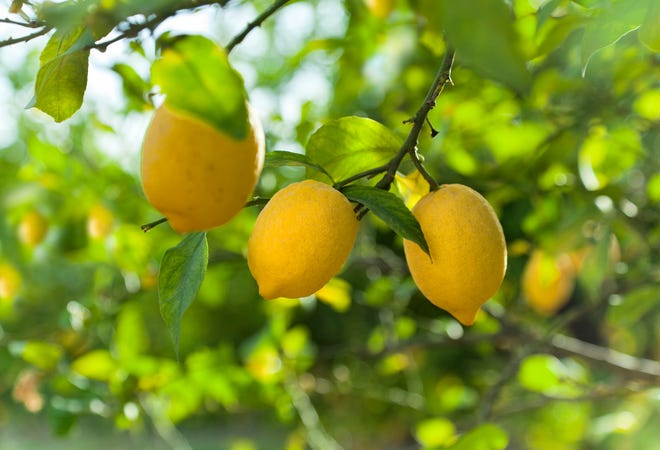Gardening: Specific care required to keep citrus trees healthy
A lot of Marco Island homes have citrus trees in the yards. Unfortunately, the hurricanes of the past years have damaged many of them.

While citrus is not salt tolerant, most trees suffer no damage from salt water even though they are in back yards next to canals. But constant tropical storm winds can carry enough salt in the air to burn the branches and foliage. If your citrus trees appear to have dead wood toward the canal, this could be the reason. If the tree seems healthy except for a few dead branches, trim them back to healthy wood. These storms can also move the trees and tear their root systems creating the perfect environment for root rot.
There are a staggering number of mature citrus trees on Marco Island that are in decline and will probably die. This can be attributed to past hurricanes. You might as well remove these trees and plant new as these will decline further and eventually die.
January is one of the months to fertilize citrus, so be sure you don’t miss this chance to fertilize. The planting and later care of a citrus tree is very important. Many do not survive due to a lack of understanding of the following techniques.

Citrus need full sun and anything less will affect the growth and production of the trees. Appropriate spacing is necessary as most citrus trees are rapid growers and large round trees. Plant citrus trees at least 20 to 25 feet apart to allow for mature growth. Citrus trees should be planted at least 15 feet from buildings or other large ornamentals.
Before planting clear the area of all grass and weeds. Add 4 to 5 shovelfuls of organic matter like peat moss or manure to amend sandy soils. Citrus trees will not tolerate sitting in wet soil so avoid planting in boggy areas unless you raise the soil level by building a planting bed.
Citrus can be planted any time of the year but late winter to early spring is the best time. Make sure the tree you select is healthy with a nice straight trunk. If it is diseased or insect infested, or if the roots are coming out of the drain holes indicating a pot-bound tree, leave these at the nursery. When ready to plant, remove the tree from the grower’s pot and check for roots which are spiraling around the root ball. Gently pull these roots free so they protrude from the ball. If the tap root is coiled at the bottom soak the root ball for several hours in water to allow for some straightening of the tap root and any other badly coiled roots before planting.
You want to make the hole for planting large enough that you can spread the roots out if necessary. Set the plant slightly higher than it grew in the container making sure the bud union (or grafting site) is at least 6 inches above the soil line. This area of the tree is very vulnerable to infection of foot rot, a soil fungi which are splashed onto the susceptible area by rain or irrigation.
Backfill half the hole and compress the soil to remove air pockets. Water to help settle the soil around the roots and finish filling the hole. Form a water basin around the tree by making a ring of soil 4 to 6 inches high to allow for adequate watering while the tree is young. Do not mound the soil around the trunk of the tree! Leave the water basin for six months to a year.
Water your new tree two to three times a week for the first month and then twice a week for the next month. Taper off to a thorough watering once a week if there has not been adequate rainfall.
The only pruning necessary on a citrus tree is to remove sprouts or suckers from the trunk or to remove dead wood or crossing branches which could cause damage to the other branches. Also low hanging branches to allow air flow under the tree.
Do not fertilize your new tree until it shows signs of new growth. Spread the fertilizer evenly in your water basin the first year and then after that spread the fertilizer on an area twice the diameter of the tree canopy and water in thoroughly. Citrus has fine feeder roots which extend beyond the canopy. Use a balanced citrus special fertilizer with the necessary minor elements four to five times a year the first year. The first application should be in February and the last in September. The second year fertilize four times and three times thereafter in January, June and October.
Citrus can suffer many insect and disease problems. I will talk about these in a future column.
Eileen and Peter Ward have owned a landscape and lawn maintenance company for 35 years. Eileen can be reached at Gswdmarco@comcast.net or 239-394-1413.